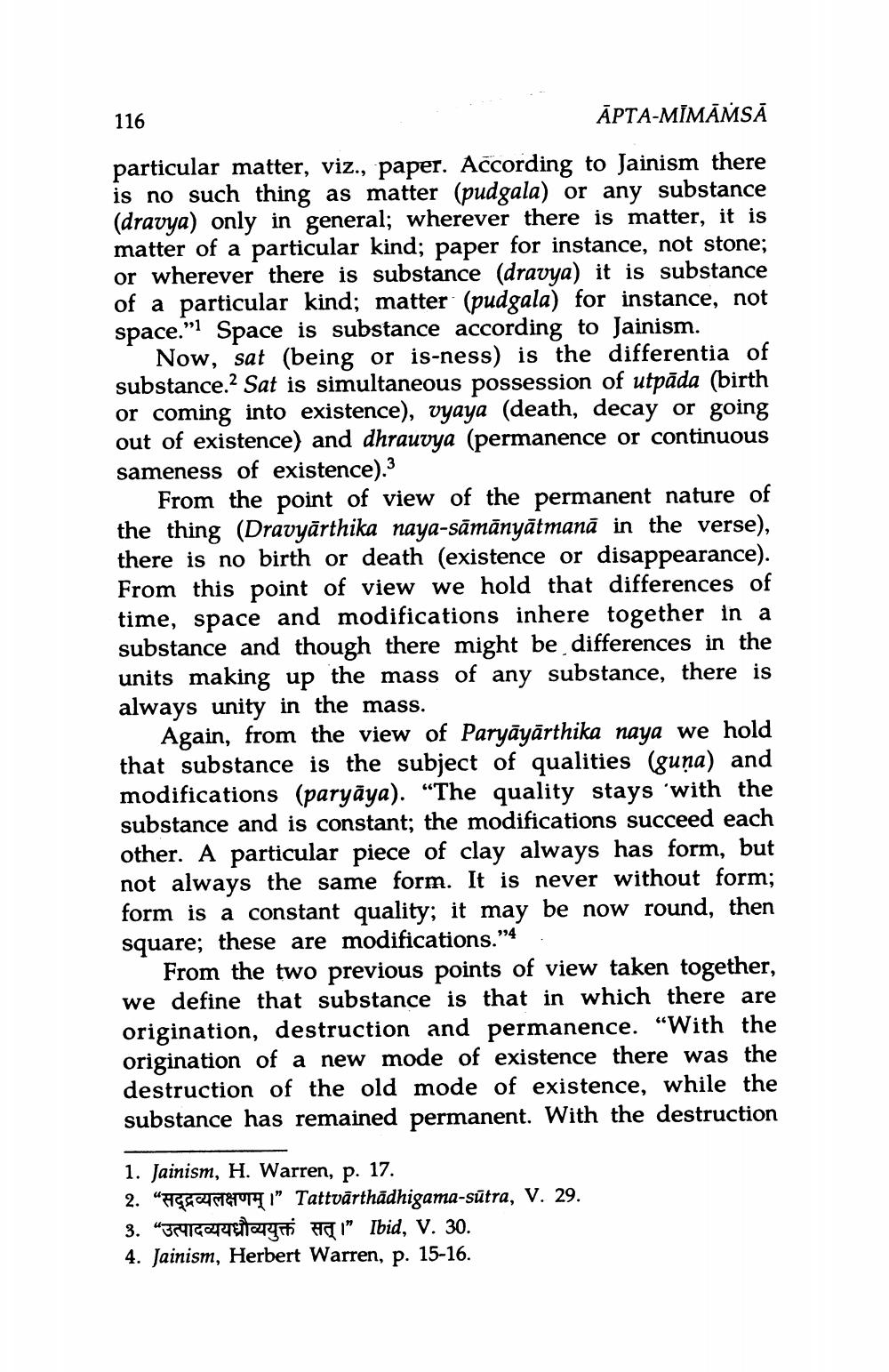________________
ĀPTA-MĪMĀMSĀ
particular matter, viz., paper. According to Jainism there is no such thing as matter (pudgala) or any substance (dravya) only in general; wherever there is matter, it is matter of a particular kind; paper for instance, not stone; or wherever there is substance (dravya) it is substance of a particular kind; matter (pudgala) for instance, not space." Space is substance according to Jainism.
Now, sat (being or is-ness) is the differentia of substance.2 Sat is simultaneous possession of utpāda (birth or coming into existence), vyaya (death, decay or going out of existence) and dhrauvya (permanence or continuous sameness of existence).3
116
From the point of view of the permanent nature of the thing (Dravyarthika naya-sāmānyātmanā in the verse), there is no birth or death (existence or disappearance). From this point of view we hold that differences of time, space and modifications inhere together in a substance and though there might be differences in the units making up the mass of any substance, there is always unity in the mass.
Again, from the view of Paryāyārthika naya we hold that substance is the subject of qualities (guna) and modifications (paryāya). "The quality stays with the substance and is constant; the modifications succeed each other. A particular piece of clay always has form, but not always the same form. It is never without form; form is a constant quality; it may be now round, then square; these are modifications."4
From the two previous points of view taken together, we define that substance is that in which there are origination, destruction and permanence. "With the origination of a new mode of existence there was the destruction of the old mode of existence, while the substance has remained permanent. With the destruction
1. Jainism, H. Warren, p. 17.
2. "I" Tattvärthadhigama-sutra, V. 29.
3. “उत्पादव्ययध्रौव्ययुक्तं सत् ।” Ibid, V. 30.
4. Jainism, Herbert Warren, p. 15-16.




